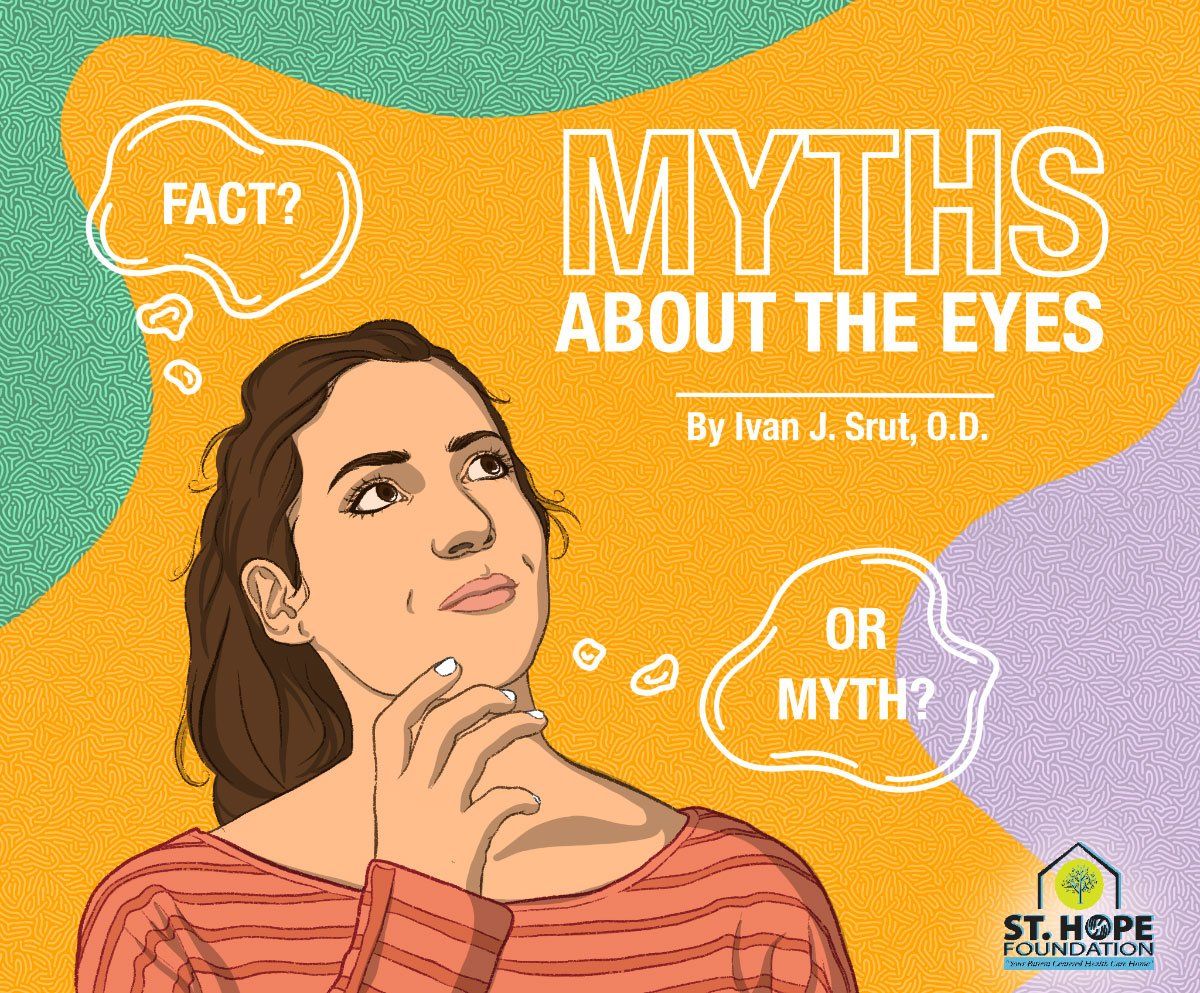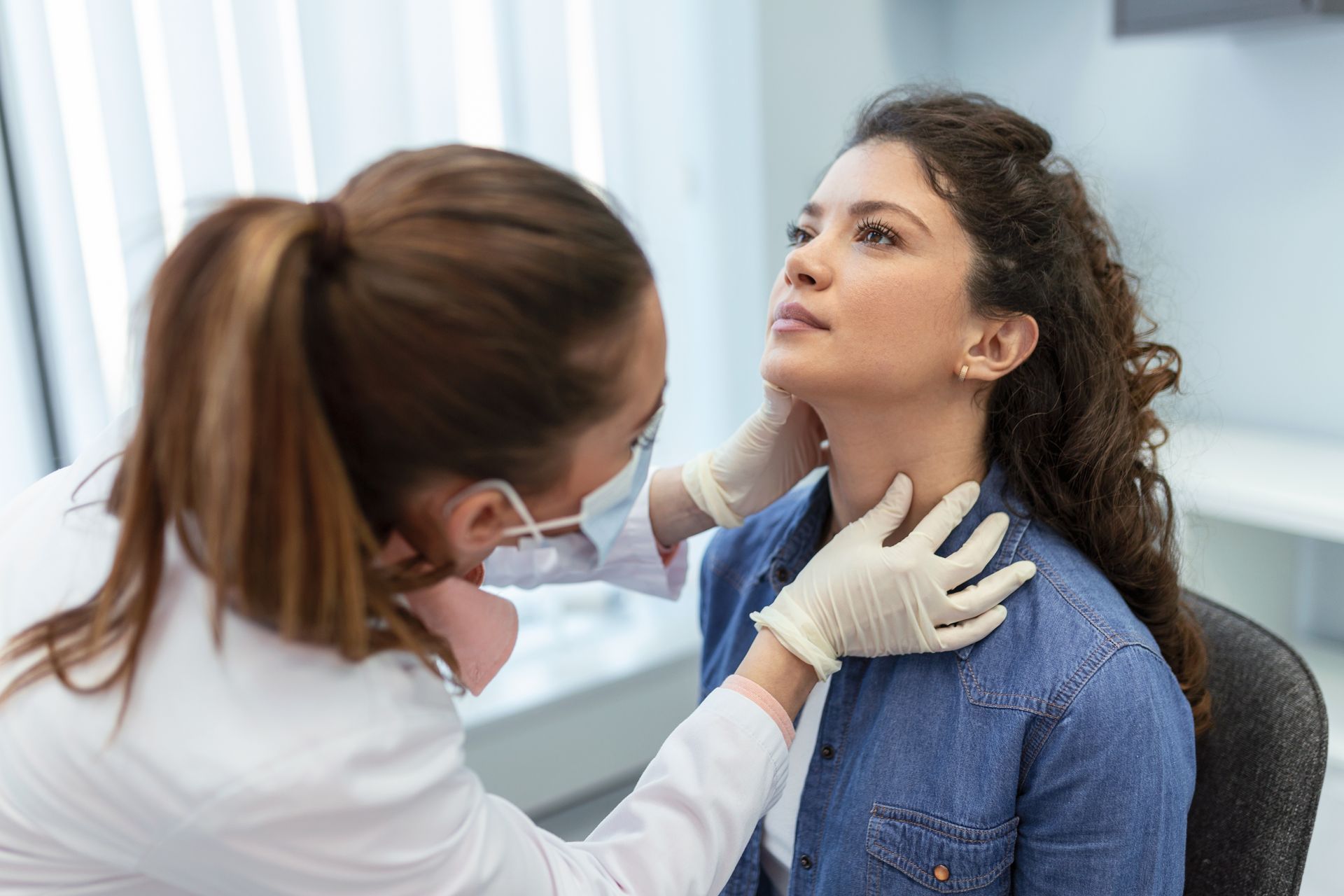Recent Posts
Myths About the Eyes

Blog by Ivan J. Srut, O.D.
Chief of Optometry for St. Hope Foundation
I’m sure many of you have heard these myths about the eyes, so here’s the real truth about them!
Myth: Eating carrots can improve your vision
Fact: Although carrots are high in Vitamin A, a nutrient which is essential for good vision, there are other foods which also provide Vitamin A. If you have enough Vitamin A in your diet the carrots will not improve your vision. Milk, cheese, egg yolk, liver, asparagus, apricots and nectarines are all examples of other foods with Vitamin A.
Myth: Sitting too close to the TV is bad for the eyes
Fact: Even though parents have been saying this since the invention of the TV, there is no evidence that shows this to be true. Kids may do this because they are more engaged in the program they are watching, or they could actually be near-sighted. Best to make sure that they have an eye exam to check, but it won’t damage their eyes!
Myth: Only boys can be color-blind
Fact: Although it is less common, girls can also be color-blind. About 1% of girls, and 8% of boys have some form of color blindness.
Myth: If you cross your eyes they will stay that way
Fact: The eye muscles allow you to move your eyes in various directions that will not result in them staying in that position. Crossed eyes can actually result from eye disease, uncorrected vision, or nerve and muscle damage.
Myth: Reading in dim light is harmful to your eyes
Fact: It does not actually harm the eyes to read in dim light, but good lighting will make it easier to see what you are reading, and it will keep your eyes from getting tired more quickly.
Myth: Two blue-eyed parents can’t produce a brown-eyed child
Fact: Although it is very rare, it actually can happen! Also, two brown-eyed parents can have a child with blue eyes, which is also uncommon.
Myth: Wearing glasses too much will make the eyes “dependent” on them
Fact: Near-sightedness, far-sightedness, and astigmatism tend to change as kids get older, and it is likely due to genetics. Whether the glasses are worn earlier, later, more or less, the eyes do not get worse from wearing glasses.
Myth: Not everyone gets cataracts
Fact: If you live long enough, and hopefully you will, you will absolutely develop cataracts. They may not be bad enough to have surgery, or to keep you from continuing to do things that require adequate vision, but you will get them.
Myth: Cataracts can only be removed if they are “ripe”
Fact: A cataract can actually be removed at any time that it compromises your vision! If you are having trouble reading or seeing street signs with your best glasses, it may be time to consider surgery.
Myth: The eye is full size at birth
Fact: The eye is actually NOT full size at birth, but does continue to grow during childhood, and may account for some of the changes in a child’s glasses prescription.
Myth: Looking directly at the sun can improve your eyesight or your health
Fact: Staring at the sun, even for short periods of time, can cause permanent eye(retinal) damage or even blindness without the proper eye protection. Regular sunglasses and homemade filters are not safe for sun gazing. Special filters are required.
Myth: Eyes can be transplanted
Fact: Due to the complexity of the eye, it is not possible to transplant the whole organ. The eye is connected to the brain by the optic nerve, which has more than one million nerve fibers. Once the nerves are cut they cannot be reconnected. At this time only the cornea, the transparent front part of the eye, can be transplanted.
Did you learn something from this blog? I hope you did! Until next time…









